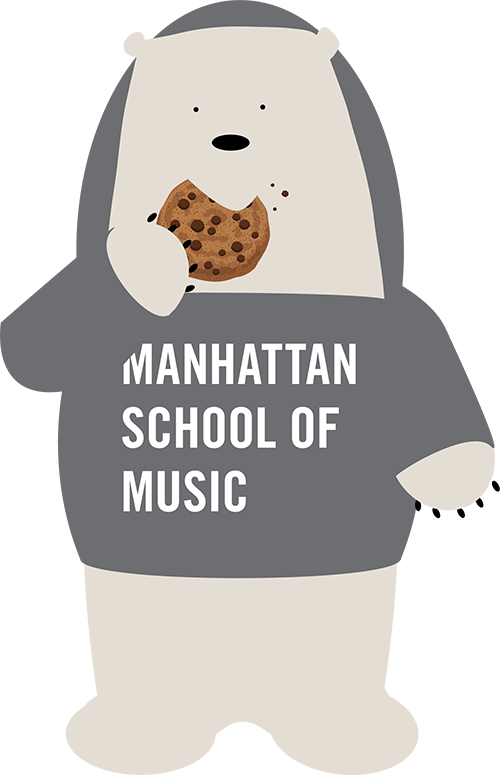From its beginnings as a small community music school, to its current incarnation as a top conservatory, Manhattan School of Music has upheld a tradition of excellence in music education.
In this section, you’ll learn about the history of Manhattan School of Music over the decades. Learn more by visiting our Virtual Yearbooks by decade, find out about MSM’s founder, and the architectural history of our campus.
A Historical Overview
For the past 100 years, Manhattan School of Music has upheld a tradition of excellence in music education, from its beginnings as a small settlement music school to its current state as an internationally renowned music conservatory.
Janet Daniels Schenck, the School’s founder, studied piano in Paris and took courses in social work at Columbia University. Prior to WWI, she became a volunteer at the Union Settlement on East 104th Street and developed an interest in the struggles and needs of the immigrant population of the area. She began organizing other young musicians to teach lessons and by 1918 had established an independent music school of 120 students and a faculty of 23. Cellist Pablo Casals and pianist Harold Bauer joined her effort, becoming artist auxiliary board members of the Neighborhood Music School (as it was known prior to a name change in 1938), and Dr. Schenck soon financed a new building and concert hall on East 105th Street.
1940s–1960s
The School steadily grew in size and reputation, ultimately becoming an accredited college that offered a Bachelor of Music degree in 1943 and a Master’s in 1947. In 1956 Dr. Schenck retired, and John Brownlee — noted baritone and then member of the MSM voice faculty — was appointed to head the School. President Brownlee oversaw an ambitious expansion program that centered on the purchase of the Morningside Heights building occupied by the Juilliard School, which was preparing to move to Lincoln Center.
1970s–1990s
After relocating in 1969 — from its long-time East Side home to larger facilities on West 122nd Street and Claremont Avenue — MSM’s college enrollment increased, the preparatory division expanded, and extension/evening classes were added. The School’s already established Opera Theatre grew in notoriety and critical acclaim, attracting highly talented students. Metropolitan Opera conductor George Schick succeeded Brownlee as the School’s third president, and John O. Crosby, founder and general director of the Santa Fe Opera, became president in 1976. Their appointments were followed by Gideon W. Waldrop in 1986 and Peter C. Simon in 1989. Important additions to the curriculum during this era included the addition of a Doctor of Musical Arts program in 1974, the offering of a Jazz degree in 1984, and the establishment of the Graduate Program in Orchestral Performance in 1991. Marta Casals Istomin, former director of the Kennedy Center for the Performing Arts, was appointed president of the School in 1992.
2000s–Today
Marta Istomin’s tenure saw the construction of the G. Chris and SungEun Andersen Residence Hall, which opened in 2001, on property adjacent to the existing School. The 19-story structure, in addition to providing the School’s first on-campus student housing, allowed for two new performance spaces, a new library, and much-needed practice and rehearsal rooms. In 2005, Dr. Robert Sirota was appointed president after his tenure as Director of the Peabody Institute in Baltimore. He instituted a graduate program in Contemporary Music Performance and, in 2010, the Center for Music Entrepreneurship, which continued MSM’s long history of career development services and offerings.
“As MSM continues to grow, our focus remains the same: to empower people to realize their potential through music.”
President, Manhattan School of Music
Under the current leadership of Dr. James Gandre, who assumed the presidency in 2013, Manhattan School of Music has initiated the city’s first conservatory-based degree program in Musical Theatre and is leading a sweeping renovation of the MSM campus and main concert hall. Now home to more than 950 college students from over 50 countries and nearly every state, with a Precollege Division numbering another 475, and a teaching-artist faculty that is second to none — the School is a thriving international community of artists.
As MSM continues to grow and innovate, the journey that Janet Daniels Schenck began a century ago endures and evolves, with a singular commitment to excellence and leadership in music, the arts, and the wider cultural community at the heart of the School’s mission.
